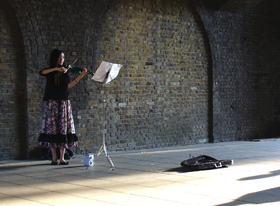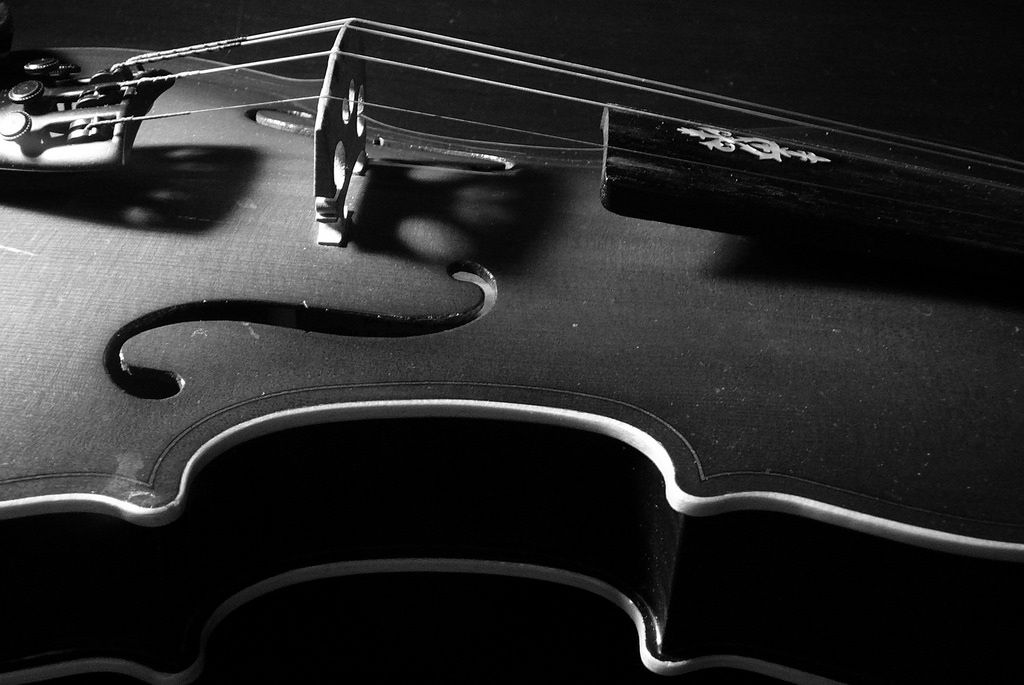| There is a view held by some onlookers in traditional music scenes that 'classical training' must be an advantage; a perception that this formal training in technique and theory is necessarily a good thing, a solid foundation, irrespective of the sort of music one wants to play - preferable perhaps to learning by ear or learning from a teacher who herself has no background in music theory or classical techniques. 'The classical training would stand to her' they say about an aspiring fiddle-player. I don't doubt that, for those who want to play classical music, classical training is indeed a very good thing. But if you want to play Irish traditional music, it seems to me that classical training is at least as much hindrance as help. |
We can probably all agree that music must contain feeling. It is not just a long succession of notes of various pitches and durations set to a particular rhythm; sheet 'music' is not music at all, even though it contains such information. It is not real music any more than a printed recipe for a cake tastes like a real cake, or an chemical equation in a textbook looks, sounds or smells like a real chemical reaction. Therefore, one could play a tune exactly as it is written down and yet not produce anything that sounds like real Irish music. There are computer programmes which can play tunes electronically from notation, but not surprisingly the result sounds like a machine; there is none of the feeling, the 'lift' ('draíocht' some people call it), or individual expression which is essential for the music to sound real. These are not things you can find written down in staff notation, or any other kind of notation. Notation has its uses, but it is only the bare bones of a traditional tune.
Now it is obvious that great feeling can also be expressed in classical music; consider Barber's well-known 'Adagio for Strings', or 'Ruht wohl, ihr heiligen Gebeine' from Bach's St. John Passion, or perhaps parts of Berlioz's 'Symphonie Fantastique'. These are composed and arranged for many instruments playing together (and in some cases voices too), and therefore the need for the musicians to follow the score, rather than embarking on individual variations, is obvious enough. It seems to me that in such a case the expressivity of the music is orchestrated (in all senses of the word) by the composer and arranger, rather than implemented by the musicians on an individual level; the musicians follow the arrangement as closely as possible and the overall effect conveys the feeling of the composition. I suppose for a soloist it is slightly different, but there is still an expectation that he follow the music as it is written. This approach works beautifully in classical music, but a similar approach does not work for traditional music since it obviously leaves less room for the improvisation of ornamentation, and the variations in phrasing and timing, which give traditional playing its characteristic 'lift' and feel.
The various styles, both regional and personal, with which Irish music are played are partly constituted by the types of ornamentation that musicians use. Someone playing in an east Galway style, for example, uses different techniques of ornamentation than a Sligo player would tend to use, and many musicians also develop personal characteristics in their playing which contribute to their individual styles. Obviously ornamentation in Irish music is a big area about which a lot can be said, but suffice it to say for the moment that ornamentation and variation in tunes are important contributing factors to what gives the music its feeling and expressivity; and there is no single correct way to do it, and therefore no way of writing it down.
The way to learn traditional music is by hearing a lot of it, feeling it, recognising the beauty in tunes, and sharing it by playing a lot with other musicians. There is no need for metronomes, staff notation, complex theory or classical training. There is no need either to play loud or especially fast; no need to dazzle onlookers with high speed playing or showy theatrics while forgetting to look for the beauty in the tunes. As I write this I think of flute-player Dan Healy, whose funeral I attended two days ago; I knew him as far back as I can remember, and he understood better than most how to find beauty in tunes and how to express it in his playing.
A few classical musicians do also manage to play Irish music excellently, and I imagine they would agree with my point that the two types of music are very different, and that understanding this is important in order to play either type well. These differences are such that classical training is neither necessary nor useful for someone who really wants to play traditional music as it should be played, and to enjoy it as it should be enjoyed.


